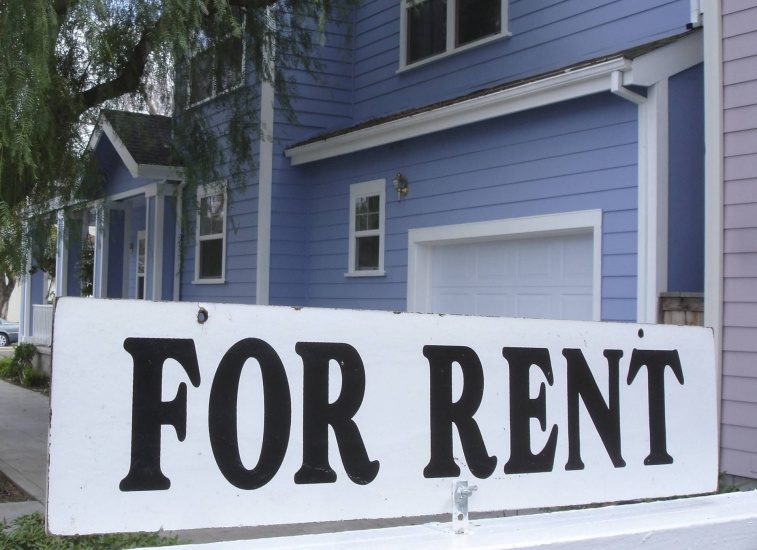KJIPUKTUK (Halifax) – On September 1 Halifax Council held a three hour virtual public hearing on a proposal to allow allow basement apartments and backyard suites for single-family homes, townhouses and duplexes across the municipality.
Later that evening Halifax regional council voted unanimously to approve the changes.
Stella Lord spoke on behalf of the Community Society to End Poverty, pushing back on expectations that the changes will provide substantial amounts of new affordable housing, while suggesting some more effective approaches.

Introduction: My name is Stella Lord and I’m speaking on behalf of the Community Society to End Poverty (CSEP). CSEP is a small organization made up of members from various parts of Nova Scotia (the majority in HRM), who represent community based agencies offering direct services or programs for people living in poverty, many of whom are on income assistance and/or living with disabilities, as well as two representatives from first voice organizations who live with disabilities and are themselves living in deep poverty.
We advocate with all levels of government on issues affecting people living in poverty, but in particular, those that affect people living in deep poverty on provincial income assistance. For the past five years, we have been meeting with Department of Community Services’ officials advising on issues related to their Employment Support and Income Assistance (ESIA) transformation initiative, while at the same time advocating for deeper transformational changes that would ensure the dignity of the person and reduce the large gap between the Market Basket Measure (MBM), Canada’s official poverty line, and what individuals and families are eligible to receive under the ESIA program—in 2017 anywhere between 60% and 30% below the poverty line depending on ‘employability’, family size, number of dependents and disability.i
Why we are here: We are presenting to these hearings about secondary and backyard suites because affordable housing for people living in deep poverty has reached a crisis point in HRM, where a rental vacancy rate of about 1.2%, now means there is little affordable rental housing available for anyone, let alone for anyone living in poverty.ii
Population growth in HRM, along with poor public policy in a number of areas over a number of years has led to this situation.
The list is long:
Deteriorating public housing stock; an HRM Centre Plan focussed on density at the expense of “complete communities”; high end apartment and condo developments with little housing that is really accessible or affordable; a growing short term rentals situation and lack of effective provincial and municipal regulation; the Province’s delay in implementing a clear affordable housing strategy (despite the infusion of federal money through the Affordable Housing Strategy); a Landlord and Tenancy program that provides little room for the voices of tenants to be heard; higher rents in renovated buildings that were once affordable; insecure employment and inadequate federal and provincial income and social security programs that limit a tenant’s ability to afford higher rents and lead to arrears, non-payment, or maybe eviction, and the inability to find something affordable.
It is not surprising, then, that despite the federal Housing First and Finding Home initiatives, the number of men, women and children in homeless shelters have been increasing rather than declining.iii
Secondary & Backyard Suites: Are they a solution to affordable housing?
I think we all know that on their own, backyard and secondary suites will not resolve all of these problems, but are they likely to help, and if so how?
I’m one half of an older couple contemplating downsizing from our family home to a smaller apartment or condo, but a backyard or secondary suite could open up other options for us (and others like us), i.e., make some changes to our home so we could create a secondary suite and rent it out so we have the extra money to pay for snow clearance or gardening etc; or alternatively co-habit with our extended family in a secondary suite they create, so we can age in place.
Secondary suites could also open up possibilities for younger ‘empty nesters’ who may have more room than they need but don’t want to move. With some adjustments to their space they could rent out a secondary suite so they could pay down that mortgage and perhaps retire earlier than they’d planned.
But will those who have the property and the resources to invest in creating a secondary suite that meets the building code and where the bylaws allow it, likely go to all this trouble to rent out to a single individual living on income assistance, whose total income may be as low as $13,000 or about $15,000 a year if IA combined with employment, and whose budget allows no more than $500 or $600 a month for rent and utilities? It would be nice to think so, but I have my doubts.
It would be nice to think that secondary or backyard suites could contribute to the ideals of ‘complete communities’ and to social inclusion, where people of diverse (dis)abilities, socio-economic, and racial, or ethnic backgrounds, including the very poor, are able to interact and socialize on a daily basis and perhaps become friends, but, even if we bracket the very real possibility of exclusion through racism or prejudice, is this realistic given the way suburban neighbourhoods, and our city’s amenities and services are currently configured?
For instance, would a low income person feel comfortable, welcome or socially included living in a middle class neighbourhood where he or she doesn’t know anyone like him or herself, and where they are unlikely to be able to get to know someone who can really relate to their realities? Or in an area where there may be limited access to public transportation or an affordable, accessible space where they can socialize with friends, such as a coffee shop, a library, or a recreation centre?
To be sure, secondary and backyard suites will likely increase the vacancy rate somewhat, thereby contributing to stabilization of rents; and they may also go some way towards creating more demographically diverse neighbourhoods in terms of age, ethnicity and even income to some extent, but, on their own, they are unlikely to create complete communities that include people of different socio-economic backgrounds, low income people, people with disabilities, Black and Brown people or people with diverse gender identities.
Nor will they solve the really big and serious problems currently associated with unaffordable housing and poverty in HRM and elsewhere in Nova Scotia— inadequate income and social security programs, low wages and insecure employment, unaffordable, inaccessible, and often unsafe and unhealthy rental housing, and the very real threat today, of becoming homeless.
To do that, we need stronger federal, provincial and municipal commitments to reduce poverty, better public services to serve and support for people with various chronic physical health, mental health, and disability conditions, and more collaborative efforts to increase our stock of safe, accessible affordable housing, including in the non-profit sector.
But in the meantime, there are some things that this Council and those who will be elected or re-elected in October, could do improve the situation:
-You could agree to landlord licensing as advocated for by ACORN Halifax and extend this to secondary and backyard suites.
-You could do more to regulate the short term rental market to ensure it is not adversely affecting the vacancy rate and rent affordability.
-You could raise more money through development fees or taxes to increase investment in that non-profit housing trust you propose to establish.
-You could support proposals to include inclusionary zoning in the HRM Charter, lobby the provincial government to allow it and then introduce by laws to enforce it.
-You could be more persistent in calling for provincial action on affordable housing so that ‘complete communities’ could become a reality, not just an ideal in a planning document.
– You could also exert your influence through the Nova Scotia Federation of Municipalities and the Canadian Federation of Municipalities to promote stronger poverty reduction measures at provincial and federal levels.
Thank you for listening.
Stella Lord, Ph.D. Coordinator, The Community Society to End Poverty
i In 2018 income assistance in Nova Scotia for a single person considered employable was 61% below the MBM; for a single person with a disability it was 54% below, for a single parent, with one child it was 33% below and for a couple with 2 children it was 27% below the MBM. 2019 Maytree Report, Welfare in Canada, 2018. It should be noted that in 2019, the Nova Scotia government introduced some improvements in the employment income disregards regime so that people on income assistance could earn somewhat more than previously before income assistance was deducted and a sliding scale before it was deducted dollar for dollar.
ii There are gender differences in why and how women and men become homeless, but the main barrier to securing affordable housing is the gap between income and house. Affordable Housing Association of Nova Scotia, “Everyone Counts: Report on the 2018 Halifax Point in Time Count”, 2018.
iii Interview with Linda Wilson, Executive Director of Shelter Nova Scotia, August, 2020. The reasons why people become homeless are diverse, but 25% of those interviewed for the Everyone Counts report, indicated they were evicted from their last home. However, most women become homeless due to domestic violence. Ibid, p.7.
See also: Community Society to End Poverty (CSEP): Letter to Finance Minister Karen Casey
With a special thanks to our generous donors who make publication of the Nova Scotia Advocate possible.
Subscribe to the Nova Scotia Advocate weekly digest and never miss an article again. It’s free!




I thought of this idea 30 years ago when I first went on assistance and I wonder why it hasn’t happened yet. I think one problem will be asking homeowners to rent these units for only $500, which, for example, is all I could pay, when they could easily find tenants who can pay more. They may only agree to do this if the government helps them with the upfront costs of building or renovation. Greed is an insidious problem in this world. Everybody is out to make as much profit as they can. It’s a rare time someone is willing to help another person by passing up thousands of dollars in yearly income. Indeed, landlords are often referred to as greedy landlords because they charge as much rent as they think they can get away with. Any cheaper units in a building are cheaper because the landlord is getting a subsidy so he/she doesn’t suffer a financial loss. If you know of any landlord who rents to income assistance recipients at a significantly reduced rate who is not receiving any subsidy, I would like to know.
The other issue is wheelchair accessibility. A doorway is not accessible unless it is free of any step or bulky transition strip. No one with mobility devices can live in a basement apartment. I’ve gone to look at apartments that I could not even view because there was a metal strip in the doorway that was just high enough that the caster wheels of my chair would not go over them. Not everyone has one of the very expensive power chairs with big wheels that can go over these strips. As well, the stovetop and the sinks need to be lower, and there needs to be accessible cupboards. In my apartment, I have only two lower cupboards so all my food and dishes are piled in. Each time I need something, I have to drag many things out and then put them all back. The Access-A-Bus vehicle needs needs somewhere to park as well. And that’s just the tip of the iceberg regarding accessibility.